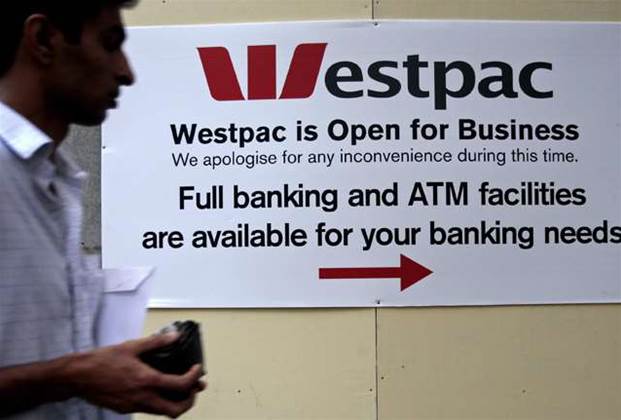Westpac has ended its most miserable year in decades with the revelation that customers for its main bank brand will need to wait another six months to get Apple Pay after it finally turned the payment platform on at subsidiaries St George, Bank of Melbourne and Bank SA.

Australia’s second largest institution, which is hunting for a new CEO and chairman in the wake of a massive money laundering scandal, on Thursday revealed it had enabled only Visa credit and debit cards for its to be ported to Apple’s popular service, with eftpos and Mastercard functionality still to come.
The decision to turn-on Apple Pay on Visa for Westpac’s minor brands is a risky strategy because already frustrated customers of the core bank will be left wondering why the smaller brands have been prioritised over the mothership.
The reasoning behind the staggered Apple Pay activation appears to be that the Westpac urgently needs to show progress on the Apple Pay front as shareholders become increasingly twitchy over the fact that Westpac has fallen well behind its peers in offering the service on the cusp on the open banking regime coming into effect in February.
The longer than expected delay for the Westpac main brand activation for Apple Pay also underscores the longstanding issues with it’s heavily customised legacy Hogan core banking system and associated mainframe infrastructure.
While St George is also uses the Hogan product, it is understood to be a more modern variant that was more recently upgraded.
Problems with Westpac’s unwieldy legacy mainframe infrastructure, which new chief information officer Craig Bright is now in the middle of replacing with a new core build, also became apparent during the AUSTRAC scandal when the bank failed to send the regular 23 million transaction alerts.
While services like Apple Pay offer banks pitiful margins on already shrinking payments profits – Apple essentially trousers all the interchange in transactions – the sheer popularity of Apple Pay means that banks that don’t offer it risk leaching customers to rivals unless they are tied to secured credit products like home loans.
Three of Australia’s Big Four banks, Westpac, the National Australia Bank and the Commonwealth Bank, essentially boycotted Apple Pay when it first arrived and tried to get a dispensation from the Australian Competition and Consumer Commission to negotiate as a block with Apple on pricing.
However the bid was rejected by the ACCC, with the CBA quickly breaking ranks to offer Apple Pay before Christmas last year, essentially forcing other banks to follow suit.
ANZ from the outset refused to join in with its peers, arguing it better served its customers by offering Apple Pay immediately. ANZ, notably, has also ported eftpos to Apple Pay, a move that means standard account and passbook holders can get access without using more expensive Visa and Mastercard products.
With the services of Westpac’s former chief executive Brian Hartzer dispensed with and its outgoing chairman Lindsay Maxsted keeping a lower profile following a severe mauling by angry shareholders at the bank’s recent AGM, the honours of the Apple Pay half-announcement fell to the head of Westpac’s consumer banking arm, David Lindberg.
“We’re excited to introduce Apple Pay for St.George, Bank of Melbourne and BankSA, as part of our commitment to changing our business to better meet the needs of our customers.
“We want to assure Westpac customers we are working to bring them Apple Pay as quickly as possible, while we roll-out the technology across our different banking platforms,” Mr Lindberg said.



_(22).jpg&h=140&w=231&c=1&s=0)







 iTnews Executive Retreat - Security Leaders Edition
iTnews Executive Retreat - Security Leaders Edition










_(1).jpg&h=140&w=231&c=1&s=0)



